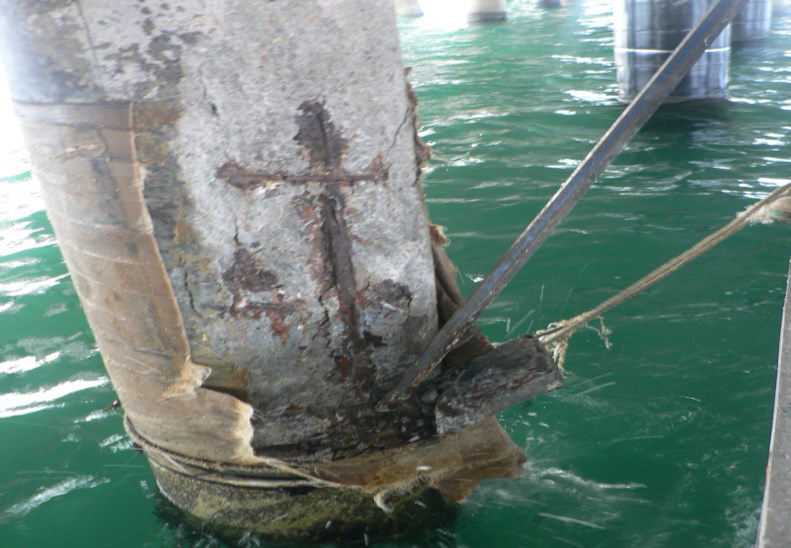INVESTIGATION OF PORT OF HASTINGS JETTIES
PROJECT HIGHLIGHTS
• Severe delamination and spalling of 2 reinforced concrete jetties in Westernport Bay• Both part of port infrastructure utilized for LPG, crude oil, and petroleum operations
• Investigation done with boat access, floating barge and suspended scaffolds respecting Westernport Bay tidal range of around 4m
• Repair and remediation options given to extend life further 30 years
Both the Long Island Point and Crib Point concrete jetties in Westernport Bay were suffering from reinforcement corrosion. An investigation was undertaken by Infracorr Consulting and URS Australia to determine the cause and extent of deterioration and to estimate a budget for repair and future protection of a further 30 years.
PROJECT BACKGROUND
Long Island Point Pier (1970) and Crib Point (1965) jetties are both approximately 1km long jetty structures administered by the Port of Hastings.
Due to their age and tidal marine environment they were suffering from reinforcement corrosion to some elements of their structure.
The Long Island Point jetty is utilized for liquefied petroleum, gas and crude oil.
It was constructed with reinforced concrete piles and crosshead beams. The Crib Point Oil Terminal jetty is utilized for petroleum products and was constructed with reinforced concrete pile caps and crosshead beams.
INVESTIGATION
Representative areas of each structure were progressively surveyed and tested utilizing boat access, floating barge, and suspended scaffolds. Tidal range was around four metres in the bay.
The Galvapulse test instrument formed the basis of the initial testing, with the instrument’s half-cell potential and resistance mapping providing immediate site information on the likelihood of corrosion in the test sites.
It was then utilized in corrosion rate mode to provide information on the current corrosion rate. All information from the Galvapulse was captured on the systems hard drive for later download and analysis in the office.
Further testing at each test site included reinforcement cover, carbonation depth testing, and delamination. Concrete samples were taken for chloride testing, targeting areas of likely corrosion identified by the half cell and corrosion rate analysis.
OUTCOME
The investigation report outlined proposed remediation and repair options with budget estimates to achieve the desired serviceable lifetime for both structures of a further 30 years.




